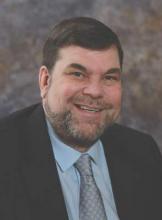I hear it at least 6 times a month: “How can I get involved? How do I get on an AAD committee?” The quick answer is to pick a committee where you have some expertise, and get others (including other organizations where you have done committee work) to write supporting letters to the American Academy of Dermatology president-elect (this year Henry Lim). In October, the president-elect fills the empty committee spots, and whoever has the most expertise and support usually gets the spot. The support of the existing committee chair is most helpful as well.
The focus of the question above, however, is too limited. AAD committee work is important, but there are many other venues in which you can develop your skills and make an impact. The best spot to start is probably your local and state dermatology or county and state medical societies. They are always looking for new enthusiastic members. You will learn about parliamentary order and how to write and defend a resolution, and you may advance quickly – perhaps right up to a state leadership position or the state American Medical Association delegation. In the state and local societies, you will also learn about challenges practitioners face outside of dermatology. The skills you will develop are useful in any physician organization, including the AAD. The state medical societies are always interested in members who will travel to testify at the state legislature. This can be a valuable experience as well.
There are many state dermatology societies that need you for advocacy, service, and leadership. These are superb places to learn leadership skills and state advocacy.
The AAD “sister” societies – including the American Society for Dermatologic Surgery (ASDS), the American College of Mohs Surgery (ACMS), the American Society for Mohs Surgery ASMS, and the Women’s Dermatologic Society (WDS) – also have multiple committees, boards, and officer positions, which do advocacy and develop policy, and are arenas in which you can learn and contribute.
You should attend a meeting of the advisory board to the AAD. This is full-throttle democracy. State and local dermatology organizations are allowed to send delegates and alternate delegates to the advisory board, and these spots often go empty. The advisory board’s resolutions go directly to the AAD board of directors to be acted on. In addition, the advisory board also appoints one of the directors to the AAD board of directors. This opportunity is underappreciated.
Involvement in SkinPAC would be most welcome (and earns you an asterisk by your name on the committee nomination roster!). The importance of legislative efforts cannot be overemphasized. Attending the legislative conference should be high on your list of things to do when you ask how to get involved.
You should also consider community involvement, regardless of your other activities. This will help your larger community in ways you could never imagine. I have served on the local health department for many years and find it rewarding and interesting. They are always keen to have more medical doctors on the board.
You can get appointed by writing the local officials (the county judge executive or mayor of the city) and expressing an interest, or to the medical director of the health department.
State medical boards are a large time commitment and a lot of work, but can be most important. We need more dermatologists on state medical boards since we are a unique specialty, and other physicians have no idea what you do in your office. Medical boards often make policy, and can have a huge impact. These positions are competitive in larger states and may require some political support from the governor in order for you to be appointed.
Charitable work is also important. Most of us volunteer to do skin cancer screenings, but there are also opportunities to provide dermatology services overseas. Dermatologists are rare in most of the world, and you will find the service most gratifying. There are opportunities closer to home in the free clinics almost anywhere.
Engagement and service by as many as possible is crucial for a specialty as small as ours, and your efforts will be noted and appreciated. There are thousands of ways to get involved, and I encourage you to get in there and do it.
Dr. Coldiron is a past president of the American Academy of Dermatology. He is currently in private practice, but maintains a clinical assistant professorship at the University of Cincinnati. He cares for patients, teaches medical students and residents, and has several active clinical research projects. Dr. Coldiron is the author of more than 80 scientific letters, papers, and several book chapters, and he speaks frequently on a variety of topics.


